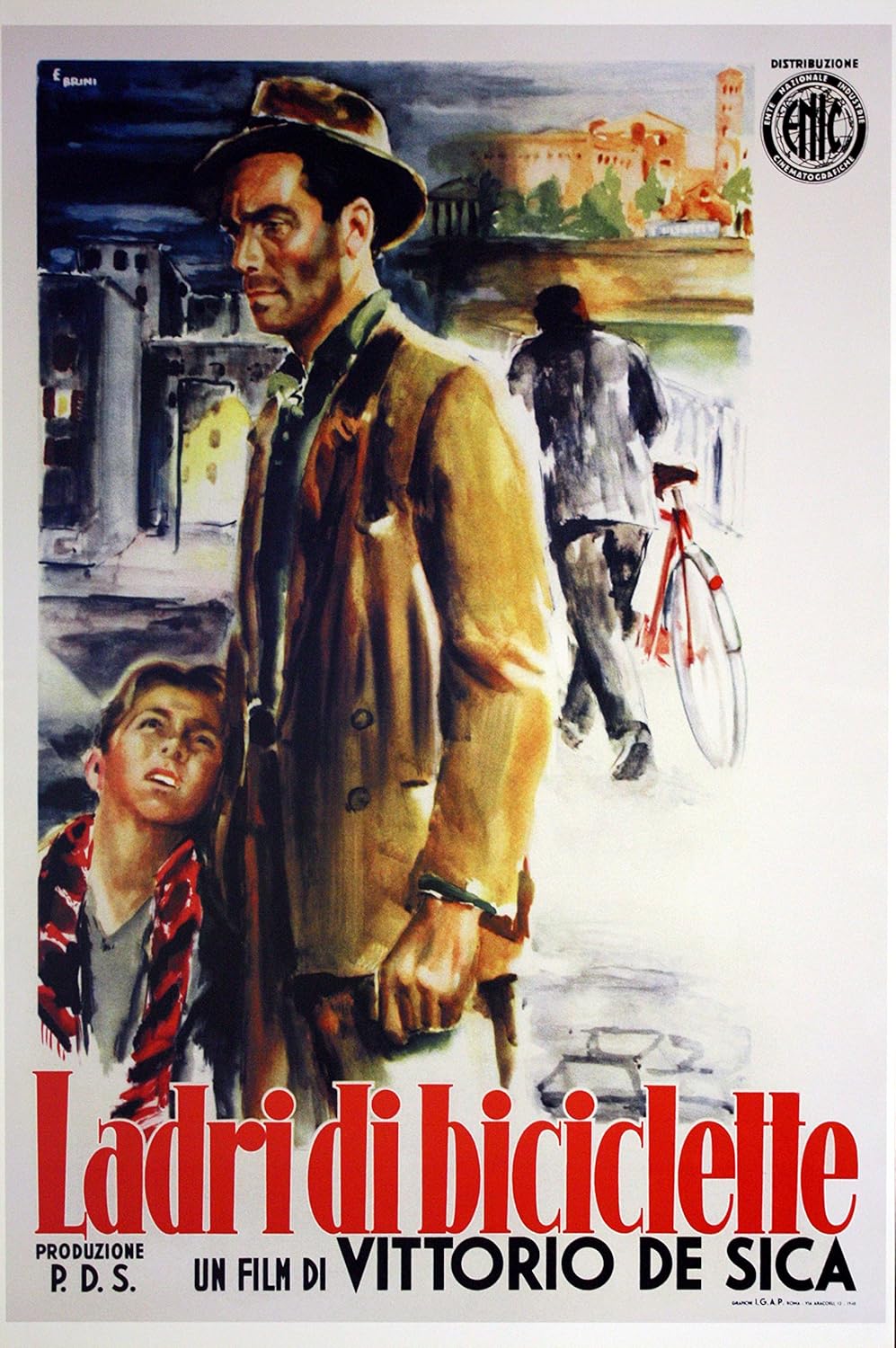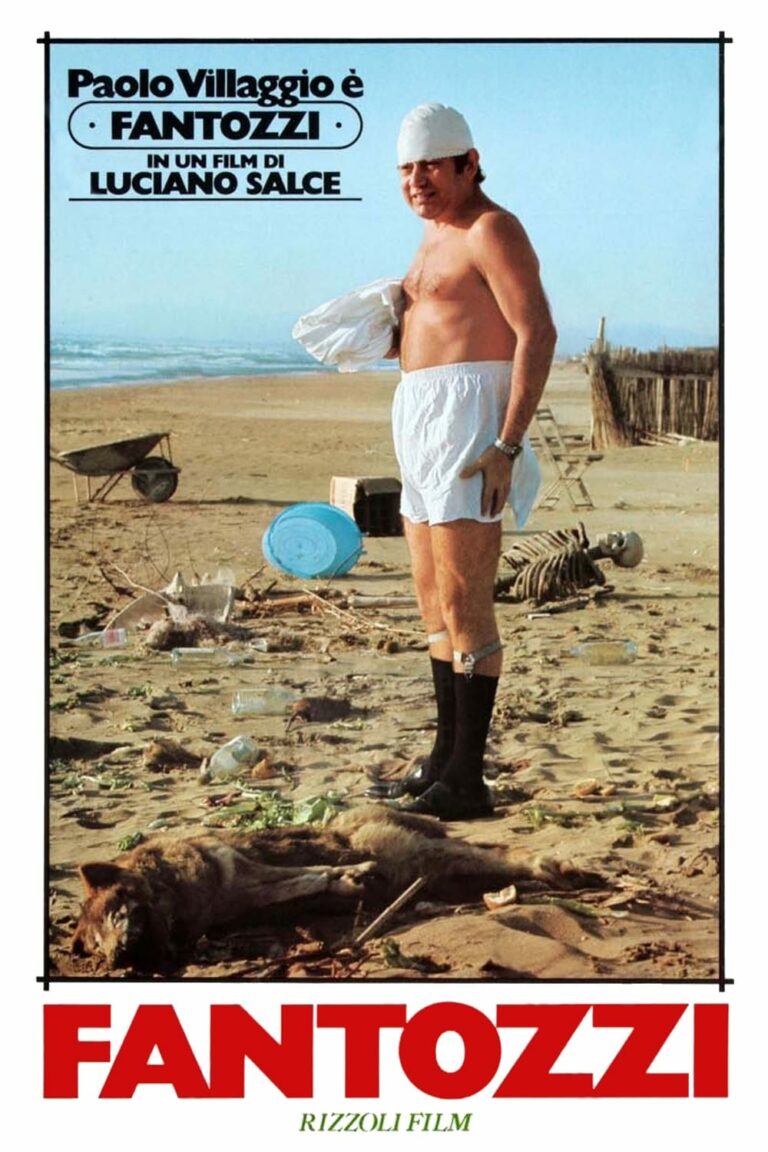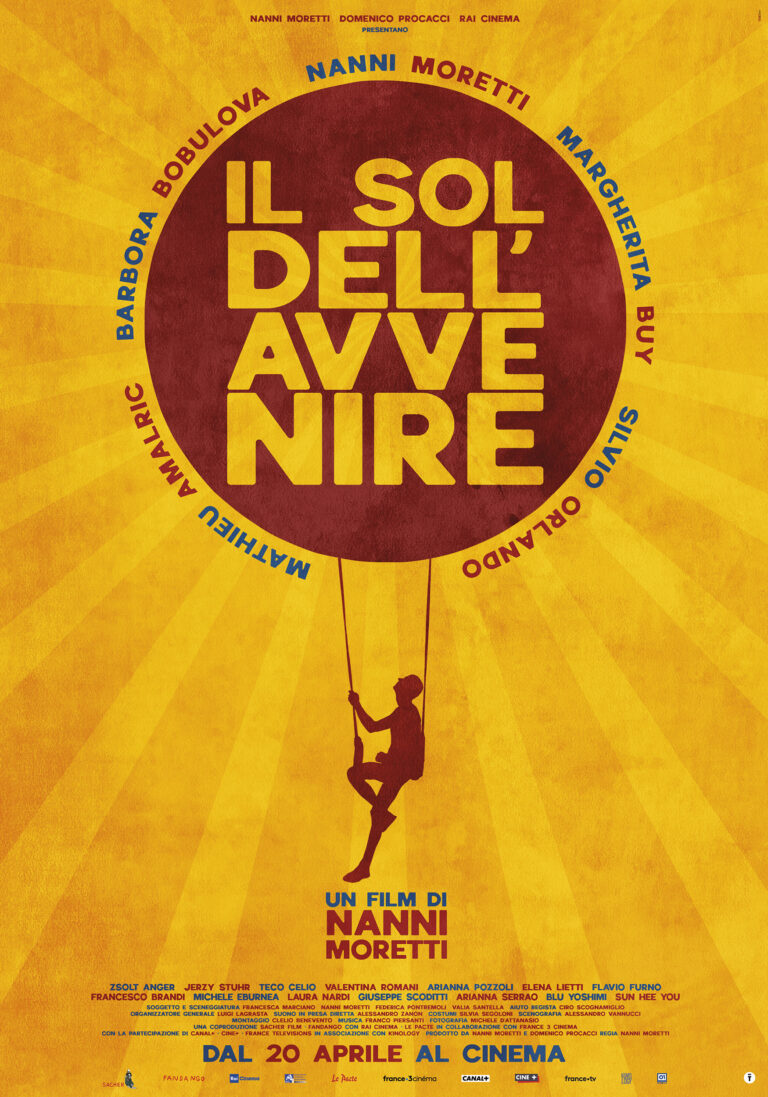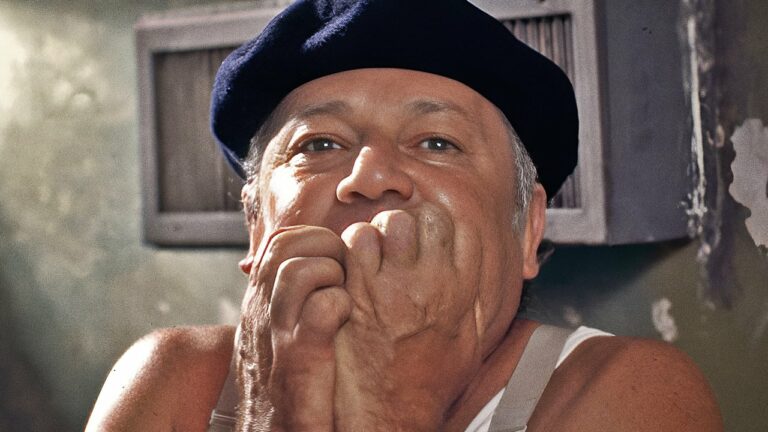
Few films have captured the human condition with as much raw emotional intensity as Vittorio De Sica’s Bicycle Thieves (Ladri di Biciclette). Released in 1948, this landmark of Italian cinema is a cornerstone of the neorealist movement, a film that explores the struggles of ordinary people in the aftermath of World War II. De Sica’s poignant tale of desperation, morality, and father-son relationships continues to resonate with audiences today, over seven decades after its debut. It is widely regarded as one of the greatest films ever made, a timeless story of humanity in its purest form.
The Story: A Simple Yet Devastating Narrative
The brilliance of Bicycle Thieves lies in its simplicity. The film follows Antonio Ricci (Lamberto Maggiorani), an unemployed man in post-war Rome who finally secures a job putting up posters—a modest but crucial opportunity to provide for his wife, Maria (Lianella Carell), and their young son, Bruno (Enzo Staiola). However, the job requires Antonio to have a bicycle, and his wife pawns their bed linens to retrieve the family’s bicycle from the pawnshop.
Tragedy strikes when, on his first day of work, Antonio’s bicycle is stolen. What ensues is a relentless and heart-wrenching search through the streets of Rome, as Antonio and Bruno attempt to recover the stolen bicycle. Without it, Antonio’s job and, by extension, his family’s survival, are at stake. The film builds to a climax of devastating emotional power, leaving viewers grappling with questions of morality, dignity, and the crushing weight of poverty.
A Portrait of Post-War Italy
Bicycle Thieves is not just a personal story but also a searing portrait of Italy in the wake of World War II. The film captures the struggles of a nation grappling with poverty, unemployment, and social disarray. Rome, as depicted in the film, is not the romanticized city of tourist brochures but a sprawling, chaotic urban landscape filled with hardship and despair.
De Sica used real locations rather than studio sets to heighten the sense of authenticity. The bustling streets, crowded marketplaces, and desolate suburbs all serve as a backdrop for Antonio’s desperate search, reflecting the broader struggles of an entire generation. The film’s neorealist aesthetic—marked by the use of non-professional actors and naturalistic lighting—immerses viewers in the grim realities of post-war life.
The Father-Son Relationship
At the heart of Bicycle Thieves is the poignant relationship between Antonio and his son, Bruno. Their bond is both tender and fraught, serving as the emotional core of the film. Bruno idolizes his father, looking to him for guidance and strength, while Antonio bears the weight of providing for his family and maintaining his son’s respect.
As the story unfolds, Antonio’s growing desperation leads him to make choices that threaten to shatter this bond. The devastating moment when Antonio contemplates stealing a bicycle himself is a powerful commentary on the moral compromises that poverty can force upon even the most principled individuals. Bruno’s reaction to his father’s actions is heart-wrenching, a stark reminder of the fragility of dignity in the face of relentless hardship.
Themes of Poverty and Morality
One of the central themes of Bicycle Thieves is the intersection of poverty and morality. The film portrays a world where economic deprivation erodes ethical boundaries, forcing individuals into impossible situations. Antonio’s theft of the bicycle is not an act of malice but a desperate attempt to reclaim his livelihood and protect his family.
De Sica does not judge his characters; instead, he presents their struggles with compassion and humanity. The film asks viewers to empathize with Antonio’s plight and consider the broader social and economic systems that create such desperate circumstances. In doing so, Bicycle Thieves transcends its specific setting to become a universal meditation on human suffering and resilience.
The Neorealist Aesthetic
Bicycle Thieves is a quintessential example of Italian neorealism, a movement that emerged in the 1940s as a response to the glossy escapism of pre-war cinema. Neorealist films sought to depict the lives of ordinary people with unvarnished honesty, often using non-professional actors and on-location shooting to create a sense of immediacy and authenticity.
De Sica’s decision to cast non-professional actors in the lead roles is one of the film’s defining features. Lamberto Maggiorani, a factory worker with no prior acting experience, delivers a raw and understated performance as Antonio, while young Enzo Staiola’s portrayal of Bruno is remarkably natural and affecting. Their performances lend the film a sense of realism and emotional truth that would be difficult to achieve with seasoned actors.
Enzo Staiola as Bruno: A Remarkable Child Performance
One of the standout elements of Bicycle Thieves is the performance of Enzo Staiola as Bruno. Despite his young age and lack of experience, Staiola captures the innocence, loyalty, and heartbreak of his character with astonishing depth. Bruno’s unwavering support for his father, even in the face of disappointment, is both heartwarming and heartbreaking.
The scenes between Antonio and Bruno are imbued with a tenderness that makes the film’s climax all the more devastating. Whether they are playfully joking or silently walking side by side through the streets of Rome, their relationship feels profoundly real, a testament to De Sica’s skill as a director and his ability to elicit authentic performances from his cast.
A Universal Story
While Bicycle Thieves is deeply rooted in the socio-economic realities of post-war Italy, its themes are universal. The film resonates with anyone who has experienced hardship, struggled to provide for their family, or faced moral dilemmas. It is a story about survival, sacrifice, and the enduring bond between parent and child.
The film’s universality is one of the reasons it has remained a touchstone of world cinema. Its themes of poverty, dignity, and human resilience continue to resonate with audiences across cultures and generations, making it as relevant today as it was in 1948.
Critical Reception and Legacy
Bicycle Thieves was met with critical acclaim upon its release, winning numerous awards, including an honorary Academy Award for Best Foreign Language Film. It has since been consistently ranked among the greatest films of all time, praised for its emotional power, social commentary, and cinematic innovation.
Directors such as Satyajit Ray, Ken Loach, and the Dardenne brothers have cited Bicycle Thieves as a major influence on their work, and its impact on the neorealist movement cannot be overstated. The film’s legacy is not only in its storytelling but in its ability to use cinema as a tool for social awareness and empathy.
Conclusion
Vittorio De Sica’s Bicycle Thieves is a masterpiece of cinema, a film that transcends its time and place to speak to the universal struggles of humanity. Its unflinching portrayal of poverty and morality, coupled with its deeply affecting father-son relationship, makes it a work of profound emotional and social significance.
As a cornerstone of Italian neorealism, Bicycle Thieves remains a testament to the power of film to illuminate the human condition. It is a film that stays with you long after the credits roll, not just for its heartbreaking story but for its unyielding compassion and truth. Decades later, it continues to inspire, challenge, and move audiences, standing as one of the most enduring achievements in cinematic history.





